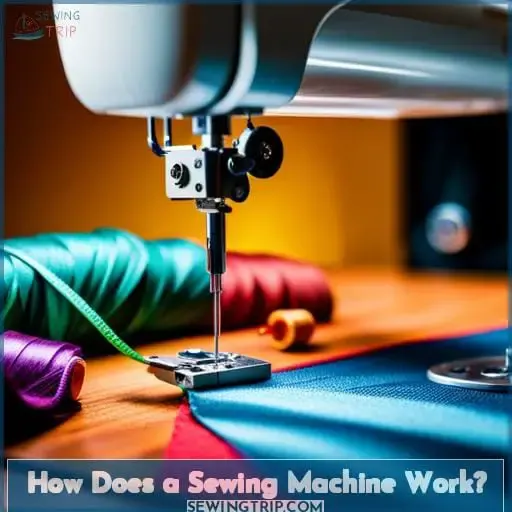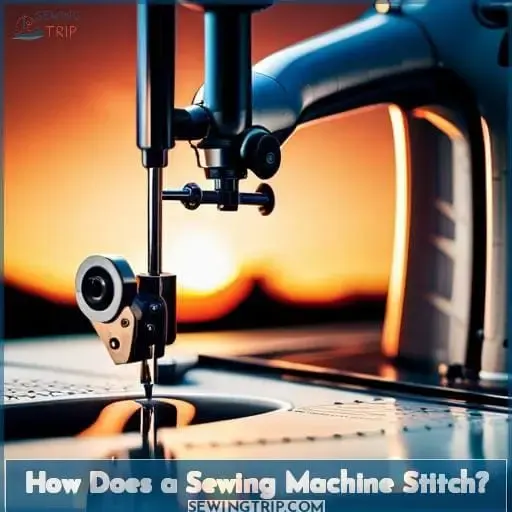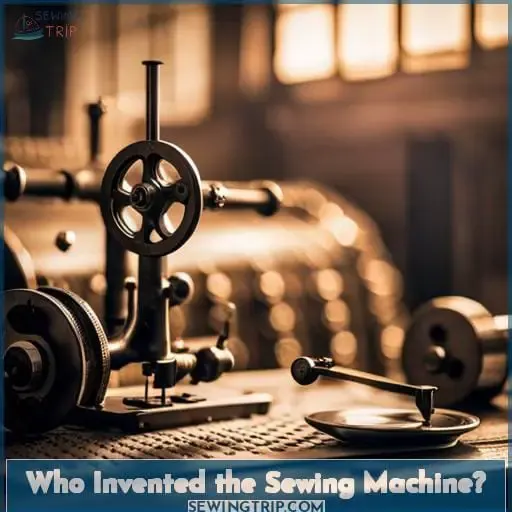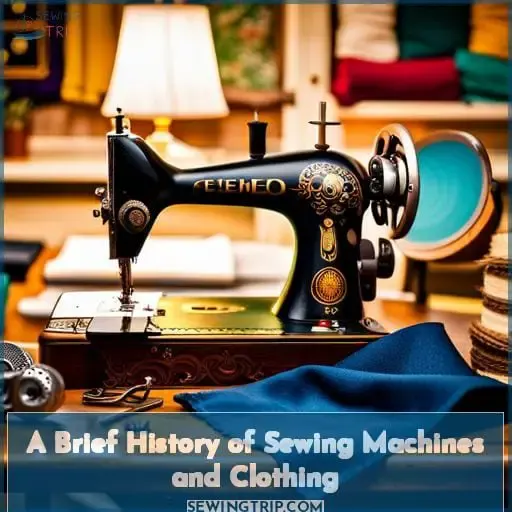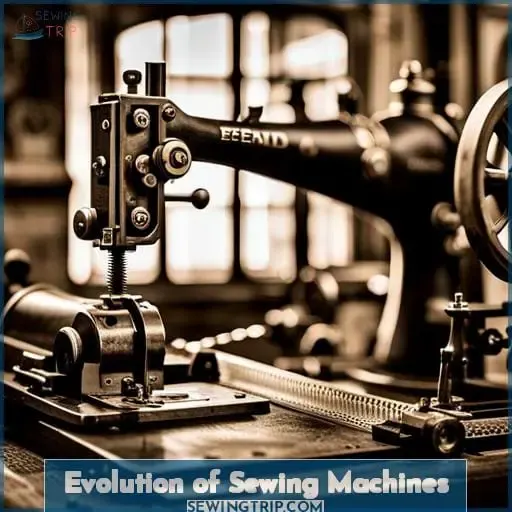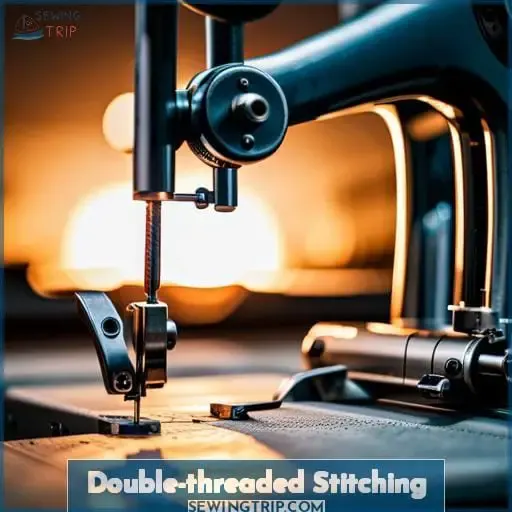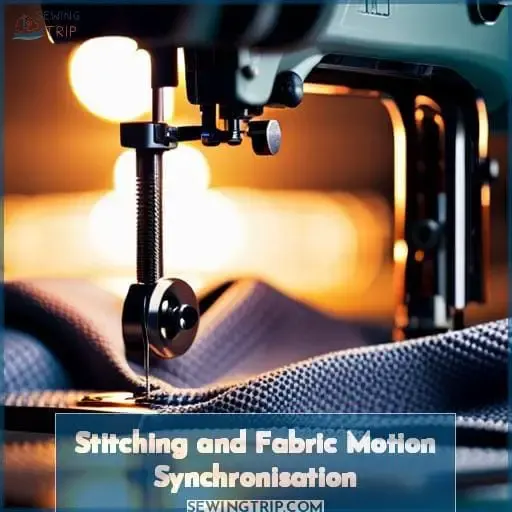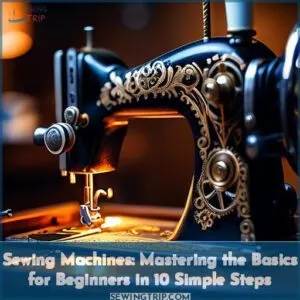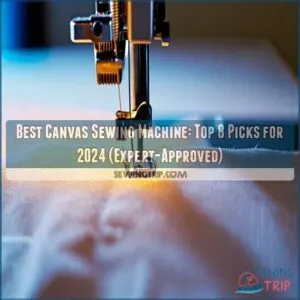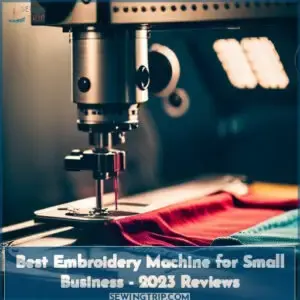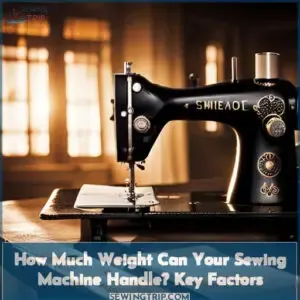This site is supported by our readers. We may earn a commission, at no cost to you, if you purchase through links.
Welcome to the world of sewing machines! Sewing is a skill that has been around since ancient times, but modern technology has made it much easier. With today’s amazing machines, you can quickly and easily stitch together fabric for garments, household items, and more.
In this article, we’ll explore how these clever devices work their magic – from the mechanism inside to some of the history behind them.
Table Of Contents
- Key Takeaways
- What is a Sewing Machine?
- How Does a Sewing Machine Work?
- How Does a Sewing Machine Stitch?
- Who Invented the Sewing Machine?
- A Brief History of Sewing Machines and Clothing
- Evolution of Sewing Machines
- Double-threaded Stitching
- Stitching and Fabric Motion Synchronisation
- Frequently Asked Questions (FAQs)
- Conclusion
Key Takeaways
- Sewing machines have three main mechanisms: needle, bobbin, and shuttle, and feed-dog, which work together to create precise and accurate stitches on a variety of fabrics.
- The type of thread and needle used will depend on the thickness and texture of the fabric being sewn, and adjusting thread tension, needle, and foot types can help achieve synchronization for better results.
- Sewing machines have significantly reduced labor costs over time and can create intricate designs, perfect patterns, and consistent stitches, making them an essential tool for any fashion or textile professional.
- To ensure safe use of a sewing machine, it’s important to keep your fingers away from the needle and moving parts, and to learn proper techniques for troubleshooting issues and creating perfect stitches every time.
What is a Sewing Machine?
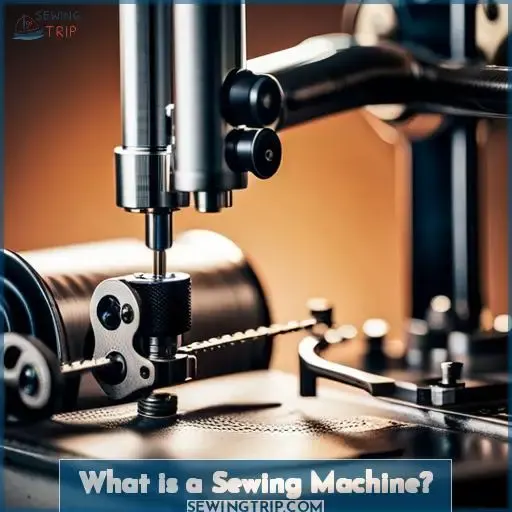
A sewing machine is a mechanical device that allows fabric and other materials to be joined together using thread. It can create intricate designs, perfect patterns, and precise stitches with the help of its many features.
Its design consists of an upper threading system, lower bobbin case for the lower thread, two feed dogs that move the material forward between each stitch being sewn together by a needle controlled by an electric motor or foot pedal.
Different types of threads are used depending on what type of fabrics you’re working with; different techniques require different skills from their user; varying design features allow for even more creative possibilities! Sewing machines provide us with endless potential when it comes to creating beautiful pieces out of fabric and textiles – no matter your skill level or experience in sewing!
How Does a Sewing Machine Work?
You may have wondered how a sewing machine works, and here is your answer. A sewing machine consists of three main mechanisms: the needle mechanism, bobbin and shuttle mechanism, and feed-dog mechanism.
The needle moves up and down rapidly to pierce through fabric layers, while the bobbin holds thread beneath that creates stitches on top of fabrics when it interacts with the shuttle above. The feed-dog then pulls fabric pieces together in order for them to be stitched accurately by these two mechanisms combined.
Needle Mechanism
Sewing machines rely on a complex yet intricate needle mechanism. The special eye on its pointy end pushes thread through the fabric without going through itself. With an electric motor as its power source, the machine’s hook rotation catches bobbin thread, which is then caught in the loop of upper thread to make a knot when tightened by the needle.
Bobbin and Shuttle Mechanism
You’ll be amazed at the speed and precision of a modern sewing machine’s bobbin and shuttle mechanism! It can rotate faster than the needle, with a top-end model running up to 1200 rounds per minute – twice as fast as its low-end counterpart.
The bobbin thread is pulled from beneath through the eye in the needle plate via the motor’s rotation, which drives two drive shafts that control stitch formation. This power source also moves fabric between stitches with belts, cranks, and drive shafts, creating perfect knots using both threads.
The upper thread punctures the material, leaving a loop for the hook on the shuttle to catch it around the lower thread.
Feed-dog Mechanism
You can rely on the feed-dog mechanism to move your fabric through the machine at a steady speed, ensuring that each stitch is of equal length. This precision allows for accuracy when sewing with different thread types and needle strengths in order to accommodate various pieces of material.
Modern machines have separate mechanisms which are powered by an electric motor or electronics depending on the model type. The electronic sewing machine has a circuit board and display panel, making it easier to set up for stitching formation processes.
The feed-dogs pull fabrics between two stitches, enabling control over stitch size, tension, and pressure. They also synchronize fabric motion with other parts of the machine’s mechanism like belts, drive shafts, or cranks connected together via power source from pedal operation.
How Does a Sewing Machine Stitch?
By coordinating three mechanisms, you can create perfect stitches with a sewing machine. The top thread (needle thread) pokes through the eye of the needle, while the bottom thread feeds from the bobbin.
The needle punctures the fabric and takes its own length of thread through it to form each stitch.
Meanwhile, a rotating shuttle hook catches this loop around so that it locks onto its bobbin counterpart – forming an unbreakable knot when pulled tight by your machine’s motor power. Sewing machines use their needles’ eyes to push threads into fabrics without going through themselves.
Without these loops of fabric locked together in knots via our powerful machines, we’d be left with only traditional running stitches made entirely by hand – which are almost impossible today!
Who Invented the Sewing Machine?
In the mid-1800s, several inventors began to devise ways of mechanizing the process used by skilled seamstresses. This culminated in Elias Howe’s successful invention of a practical sewing machine in 1846.
Walter Hunt, for example, invented an ingenious technique suited for mechanical processes and was later given credit as one of the forefathers behind modern-day sewing machines. His work enabled better stitching with faster speeds and increased fabric types that were compatible with needle sizes.
Motor power also had to be taken into consideration when using his separate thread system, which required precision work seen today on models such as early Singer machines patented by the US Patent Office.
Ancient inventions like looms inspired this revolutionary technology that automated clothing production, allowing greater flexibility while significantly reducing labor costs over time.
Sewing machines have come a long way since their inception due largely to advances in technology.
A Brief History of Sewing Machines and Clothing
Sewing machines have become an integral part of modern fashion. Since Isaac Singer patented his first machine in the 1850s, sewing has been revolutionized from a laborious process to one that is precise and efficient.
Sewing machines use two separate threads which are locked together with three coordinated mechanisms – needle thread, bobbin thread, and shuttle hook – to make perfect stitches of equal length. High-end models run at 1200 rounds per minute. However, all sewing machines rely on electricity as their power source and on electric motors for control precision.
The fabric motion is synchronized through belts connected to drive shafts, cranks, and handwheels in order for complete stitching cycles to take place quickly yet precisely between each stitch line without any inconsistencies or errors occurring along its path.
From this, we can see why today’s clothing production would not be possible without the invention of this revolutionary technology known as the sewing machine.
Evolution of Sewing Machines
You can witness the evolution of sewing machines from electric and mechanical to today’s electronic marvels – with circuit boards, displays, and specialist features.
The invention of the first practical machine by Elias Howe in 1846 set off a long-time process that has now resulted in sophisticated electronics controlling powerful power sources.
Modern machines use two separate threads for thread locking, which is almost impossible to do with the hand sewing technique invented by Walter Hunt.
Today’s sewers have access to electronically controlled motors along with cams, crankshafts, wheels, and gears, as well as special features like speed control or needle positioning systems – all powered by electricity!
But it wasn’t until the 1970s when computerized components were added, resulting in fully automated mechanisms capable of producing precise stitches at high speeds while using less energy than their mechanical counterparts.
Sewing machines are an incredible combination of technology, providing fashion designers around the world with infinite possibilities for creativity!
Double-threaded Stitching
You’ll notice the double-threaded stitching technique involves a needle piercing fabric to push one thread through, forming a knot with another thread before being pulled back up. To improve accuracy when sewing, it’s important to select an appropriate fabric and use the right type of needle and length of cotton thread.
Factors like motor power, teeth of the feed dog, as well as rotating hook play an important role in perfect synchronisation between stitches while creating tension on both threads simultaneously at all times.
The motor’s rotation drives a belt stretched between two disks connected to the handwheel, which transmits movement for raising or lowering the vertical axis connected to the needle along with a second belt linked up from drive shafts moving forward material in intervals for every stitch made by the machine.
Sewing machines are always evolving so that they can provide better accuracy and efficiency depending upon their power sources, such as electric motors run through pedals or batteries used today due to its portability feature compared to earlier models operated manually without any external source of energy required.
Stitching and Fabric Motion Synchronisation
In order to ensure uniform and precise stitches, it is important for the fabric to move in sync with the sewing machine’s mechanism. Learning techniques such as adjusting thread tension, using different needle and foot types can help achieve this synchronization.
The motor power of the machine also plays a role in achieving consistent motion, as low-end models may run at 600 rounds per minute while high-end machines can go twice as fast.
Handheld needles have only one purpose: to puncture holes through the fabric so that thread can pass through them.
| Learning Techniques | Needle Types | Foot Types |
|---|---|---|
| Adjusting Thread Tension | Universal Needles | Walking Foot |
| Using Different Needle Sizes | Ballpoint Needles | Zipper Foot |
| Choosing Proper Stitch Type | Leather Point Needles | Buttonhole Foot |
Remember that even though all these components play an essential role in creating synchronized movement between fabric and needle, ultimately understanding how they work together is key to mastering precision stitching on any material type with ease!
Frequently Asked Questions (FAQs)
What types of materials can be sewn with a sewing machine?
A sewing machine can stitch a variety of materials, including cotton, silk, denim, and leather. The type of needle and thread used will depend on the thickness and texture of the fabric to ensure optimal results.
Are there any safety precautions to take when using a sewing machine?
To ensure safe use of a sewing machine, always keep your fingers away from the needle and moving parts. Avoid wearing loose clothing or jewelry that could get caught in the machine. Remember to unplug the machine when not in use to prevent accidents.
What are the differences between hand-sewn and machine-sewn stitches?
Machine-sewn stitches are stronger and more consistent than hand-sewn stitches. In fact, a machine can sew up to 5,000 stitches per minute with precision and accuracy, making it ideal for mass production of clothing items.
What is the difference between a straight stitch and a zigzag stitch?
You may be wondering about the difference between a straight stitch and a zigzag stitch. A straight stitch is used for basic seams, while a zigzag provides flexibility, preventing fabrics from fraying or stretching.
What is the best thread to use for a particular fabric?
When selecting thread for a specific fabric, keep in mind the saying like attracts like. Opt for cotton or polyester thread for natural fibers and nylon or rayon thread for synthetic materials.
Conclusion
As generations pass, sewing machines continue to evolve and revolutionize the way we make clothes and other fabric-based products. While the core mechanisms remain the same – a needle, bobbin, and shuttle – modern machines have added power sources, options, and complex electronics.
The double-threaded stitching process, involving the synchronized motion of stitches, fabric, and power, has enabled machines to stitch with greater precision and speed. The invention of the sewing machine has made joining materials together quicker, more precise, and less laborious than ever before.
By integrating technology, the sewing machine has opened up a world of possibilities for fashion and textile designers. The sewing machine has become an essential tool for any fashion or textile professional through the symbiosis of technology and craftsmanship.

